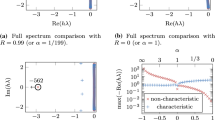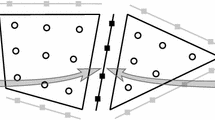We construct optimized high-order finite differencing operators which satisfy summation by parts. Since these operators are not uniquely defined, we consider several optimization criteria: minimizing the bandwidth, the truncation error on the boundary points, the spectral radius, or a combination of these. We examine in detail a set of operators that are up to tenth order accurate in the interior, and we surprisingly find that a combination of these optimizations can improve the operators’ spectral radius and accuracy by orders of magnitude in certain cases. We also construct high-order dissipation operators that are compatible with these new finite difference operators and which are semi-definite with respect to the appropriate summation by parts scalar product. We test the stability and accuracy of these new difference and dissipation operators by evolving a three-dimensional scalar wave equation on a spherical domain consisting of seven blocks, each discretized with a structured grid, and connected through penalty boundary conditions. In particular, we find that the constructed dissipation operators are effective in suppressing instabilities that are sometimes otherwise present in the restricted full norm case.
Similar content being viewed by others
References
Kreiss H.O., Scherer G., (1974). Finite element and finite difference methods for hyperbolic partial differential equations. In: Boor C.D. (eds). Mathematical Aspects of Finite Elements in Partial Differential Equations. Academica Press, New York
Kreiss, H. O., and Scherer, G. (1977). Tech. Rep., Dept. of Scientific Computing, Uppsala University Sweden.
Olsson P. (1995). Summation by Parts, Projections, and Stability I. Math. Comp. 64: 1035
Olsson P. (1995). Supplement to “Summation by parts, projections, and stability, I”. Math. Comp. 64: S23
Olsson P. (1995). Summation by Parts, Projections, and Stability II. Math. Comp. 64: 1473
Carpenter M., Gottlieb D., Abarbanel S. (1994). Time-Stable boundary conditions for finite-difference schemes solving hyperbolic systems. Methodology and application to high-order compact schemes. J. Comput. Phys. 111, 220
Gustafsson B. (1998). On the implementation of boundary conditions for the method of lines. BIT 38, 293
Mattsson K. (2003). Boundary procedures for summation by parts operators. J. Sci. Comput. 18: 133
Strand, B. (1996). Ph.D. thesis, Uppsala University, Department of Scientific Computing, Uppsala University. Uppsala, Sweden.
Carpenter M., Nordström J., Gottlieb D. (1999). A Stable and Conservative Interface Treatment of Arbitrary Spatial Accuracy. J. Comput. Phys. 148, 341
Nordström J., Carpenter M. (2001). High-order finite difference methods, multidimensional linear problems and curvilinear coordinates. J. Comput. Phys. 173, 149
Reula, O. (1998). Living Rev. Rel. 1, 3. URL http://relativity.livingreviews.org/Articles/ lrr-1998-3/index.html.
Rauch J. (1985). Symmetric positive systems with boundary characteristics of constant multiplicity. Trans. Am. Math. Soc. 291, 167
Secchi P. (1996). The initial boundary value problem for linear symmetric hyperbolic systems with characteristic boundary of constant multiplicity. Differential Integral Equations 9, 671
Secchi P. (1996). Well-posedness of characteristic symmetric hyperbolic systems. Arch. Rat. Mech. Anal. 134, 155
Lehner, L., Reula, O., and Tiglio, M. (2005). Multi-block simulations in general relativity: high order discretizations, numerical stability, and applications. Class. Quantum Grav. 22 gr-qc/0507004.
Strand B. (1994). Summation by parts for finite differencing approximations for d/dx. J. Comput. Phys. 110, 47
Svärd M., Mattsson K., Nordström J. (2005). Steady State Computations Using Summation by Parts Operators. J. Sci. Comput. 24, 79
Mattsson K., Svärd M., Nordström J. (2004). Stable and accurate artificial dissipation. J. Sci. Comput. 21, 57
Friedrich, H. (2002). Conformal Einstein evolution. Lect. Notes Phys. 604, 1, gr-qc/0209018.
Tadmor, E. (1994). Spectral methods for hyperbolic problems. In Lecture notes delivered at Ecole des Ondes, "Méthodes numériques d’ordre élevé pour les ondes en régime transitoire", INRIA–Rocquencourt January 24-28. URL http://www.cscamm.umd.edu/people/faculty/tadmor/pub/spectral-approximations/Tadmor.INRIA-94.pdf.
Svärd M. (2004). On coordinate transformations for summation-by-parts operators. J. Sci. Comput. 20, 1
Zink, B., Diener, P., Pazos, E., and Tiglio, M. (2006). Cauchy-perturbative matching reexamined: Tests in spherical symmetry. Phys. Rev. D 73, 084011, gr-gc/0511163.
Goodale, T., Allen, G., Lanfermann, G., Massó, J., Radke, T., Seidel, E., and Shalf, J. (2003). The cactus framework and toolkit: Design and applications. In Vector and Parallel Processing – VECPAR’2002, 5th International Conference, Lecture Notes in Computer Science, Springer, Berlin. URL http://www.cactuscode.org/Publications/
Cactus Computational Toolkit home page, URL http://www.cactuscode.org/
Schnetter E., Hawley S.H., Hawke I. (2004). Evolutions in 3D numerical relativity using fixed mesh refinement. Class. Quantum Grav. 21: 1465, qc/0310042
Mesh Refinement with Carpet, URL http://www.carpetcode.org/.
Schnetter E., Diener P., Dorband N., Tiglio M. (2006). A multi-block infrastructure for three-dimensional time-dependent numerical relativity. Class. Quantum Grav. 23, S 553 gr-qc/0602104
LAPACK: Linear Algebra Package, URL http://www.netlib.org/lapack/.
BLAS: Basic Linear Algebra Subroutines, URL http://www.netlib.org/blas/.
Netlib Repository, URL http://www.netlib.org/.
Burns, G., Daoud, R., and Vaigl, J. (1994). LAM: An Open Cluster Environment for MPI. In Proceedings of Supercomputing Symposium, pp. 379–386, URL http://www.lam-mpi.org/download/files/lam-papers.tar.gz.
Squyres, J. M., and Lumsdaine, A. (2003). A Component Architecture for LAM/MPI. In Proceedings, 10th European PVM/MPI Users’ Group Meeting (Springer-Verlag, Venice, Italy, 2003), no. 2840 in Lecture Notes in Computer Science, pp. 379–387.
LAM: LAM/MPI Parallel Computing, URL http://www.lam-mpi.org/
Gropp W., Lusk E., Doss N., Skjellum A. (1996). A high-performance, portable implementation of the MPI message passing interface standard. Parallel Computing 22, 789
Gropp, W. D., and Lusk, E. (1996). User’s Guide for mpich, a Portable Implementation of MPI, Mathematics and Computer Science Division, Argonne National Laboratory, ANL-96/6.
MPICH: ANL/MSU MPI implementation, URL http://www-unix.mcs.anl.gov/mpi/ mpich/.
MPI: Message Passing Interface Forum, URL http://www.mpi-forum.org/.
Sonderforschungsbereich/Transregio 7 “Gravitational Wave Astronomy”, URL http://www.tpi. uni-jena.de/SFB/.
CCT Numerical Relativity, URL http://www.cct.lsu.edu/about/focus/numerical/
Author information
Authors and Affiliations
Corresponding author
Rights and permissions
About this article
Cite this article
Diener, P., Dorband, E.N., Schnetter, E. et al. Optimized High-Order Derivative and Dissipation Operators Satisfying Summation by Parts, and Applications in Three-dimensional Multi-block Evolutions. J Sci Comput 32, 109–145 (2007). https://doi.org/10.1007/s10915-006-9123-7
Received:
Accepted:
Published:
Issue Date:
DOI: https://doi.org/10.1007/s10915-006-9123-7




